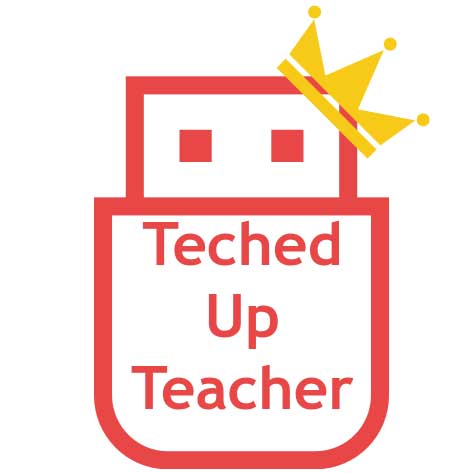Flexibility in the Gamified Classroom


Usually, I try to write something for this site every two weeks, but you may have noticed a month or more passing between posts lately. It turns out my last semester of grad school was a doozy, but I’m happy to report I’m done with school now and will be back to posting more often… soon. I say soon because I’ve been receiving quite a few emails asking how Rachel Cheafsky’s gamification journey was going, so I asked her to give us an update.
If you’ve read my last few gamification posts, you’ll know that I don’t do much Stage 1 gamification anymore. The Fair Haven Innovates program I’ve created focuses more on Stage 2 – Gamifying the Curriculum and Stage 3 – The Classroom Experience. Luckily, I get to live vicariously through Rachel, as we work closely together to try new techniques to enhance Stage 1 – Motivating the Player of my gamification system. Below Rachel talks about motivating new players in a new district across multiple grades. This has been a fun experience to tackle, but I’ll let her take it from here. As always, you may want to read The Gamification Guide and my old gamification posts to fully understand my system.
Hello all and Happy New Year! Last time we spoke, I had just finished my first year gamifying my 5th grade classroom. With the start of 2018, I am almost halfway through another year of gamifying my classroom, but this time a lot has changed. Let me fill you in!
For starters, I left my previous school district and started a new job in a new district. While I knew I was bringing gamification with me wherever I ended up, I’ve had to make some adjustments to ensure the successful implementation of gamification in my new school. The biggest difference this year, besides the age of my kids, is my classroom setting itself. I went from being a 5th grade math and science teacher back to a special education teacher. This year I have three 6th grade ICS math classes and one 7th grade resource room math class. The change in setting definitely warranted changes in my gamification style. First thing on the list, was onboarding my co-teacher.
Luckily, my three 6th grade classes are all with the same teacher! Other special education teachers understand that this is a miracle in itself. My co-teacher loved the idea of gamification and has been awesome in implementing it within our 6th grade classroom! We work well as a team and I’ve had a lot of fun implementing gamification with her.
Next, the biggest difference in gamifying in the 6th grade classes is there are a lot more students. Last year, I only had 52 students total split between my 5th grade classes and the Class vs. Class competition was only between two classes. This year, the competition in 6th grade has over a 100 kids spread out over 4 classes. While more kids and more classes makes the competition more interesting, it also makes it different to manage. For example, a popular achievement card last year was earned when students completed their side quest, the name we use for homework. Every day students would receive a card for 10 ap if they completed their homework. When I had 52 kids, this was manageable for me, over 100 not so much. What did I do? I just needed to adjust and make a new plan. Solution: two new achievement cards. The first card is called Unity. This is worth more ap, 50 to be exact, and is given to students when every member of the class completes their homework. Does this happen every day, of course not, but it does happen and it makes the students in our class hold each other accountable. To further motivate students to do their homework we created another achievement card called 1up. At the end of the week, students who’ve completed all of their side quests for the week receive a card for 50 ap. This way they can earn ap both as a class and individually, but in a way that saves us time since these achievements are earned on a less frequent basis.
Next mission on the list, how do I make this work in a resource room setting? My first concern was the class size. I was used to gamifying a classroom with at least 25 or more students, this year my 7th grade class has just 7 students. Would it still work? Would the students still be engaged if there aren’t as many other students to compete against? Would I be able to utilize as many achievements? All of these concerns crossed my mind as I embarked on the journey to figuring out a way to make it work!
Tools and ideas to transform education. Sign up below.
Although I am still adjusting as I go, overall I would say that gamification still works even in a smaller classroom setting! Of course, I have to make changes and adjustments in comparison with my larger classes, but I can still tailor it so that the students experience a gamified setting that works for our classroom. Even though I only have one 7th grade class, they are still in competition because I grouped them into teams. I split them into three teams so there is still a competition, just less members on each team.
Some ap cards I had to adjust because there are less students in the room. For example, Unity is worth 20 ap in this class because there are way fewer students. Also because of the small class size, I am still able to utilize the side quest card for homework each day.
I’ve said it before and I will say it again, gamification is the best idea I have brought into my classroom in my nine years of teaching. It’s engaging, it’s exciting, it’s motivating and I have peaked my student’s interests in ways I never could have imagined. It has improved my overall classroom management and the overall climate of my classroom in general. The new thing I learned about gamification this year is that it is flexible. Chris has used it to teach high school English and now uses it in his 4th-8th grade classes. I have used it in 5th grade, 6th grade, and 7th grade both as a general ed teacher and now as a special ed teacher. I have used it with a lot of students, few students, and as a part of a co-teaching team. I even made some adjustments to my website to make it work for both classes as well.
I never thought seeing Chris Aviles present on gamification would change the way I thought about running my classroom, but it really has done just that! He has some great ideas and lucky for me I will have the opportunity to pick his brain forever because we just got engaged at the end of the summer! Funny how things work out! I will keep you posted on the second half of year 2 in my gamified classroom toward the end of this school year, this time as Mrs. Aviles!
cross-posted at Teched Up Teacher
Chris Aviles presents on education topics including gamification, technology integration, BYOD, blended learning, and the flipped classroom. Read more at Teched Up Teacher.
Chris Aviles is a STEM teacher, edtech specialist, and president of Garden State Esports. He is also a regular contributor to Tech & Learning.
